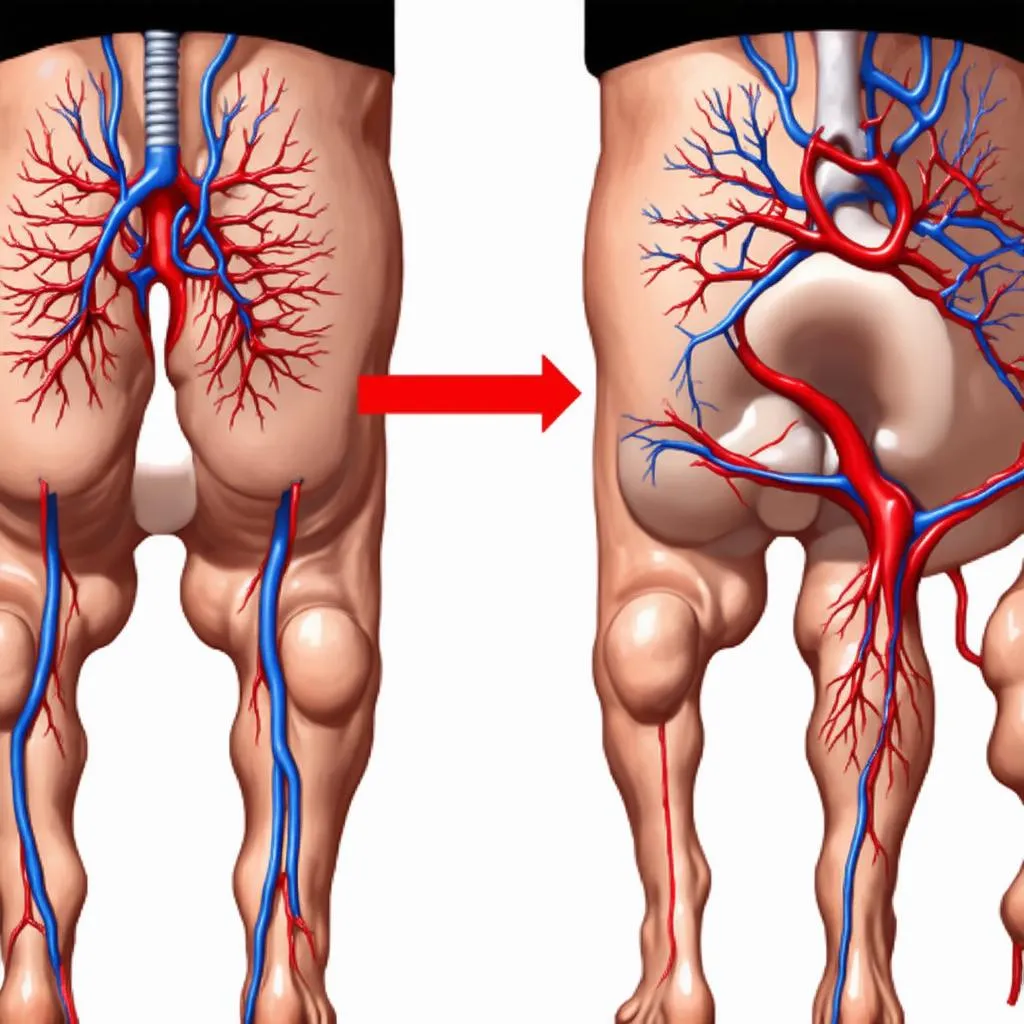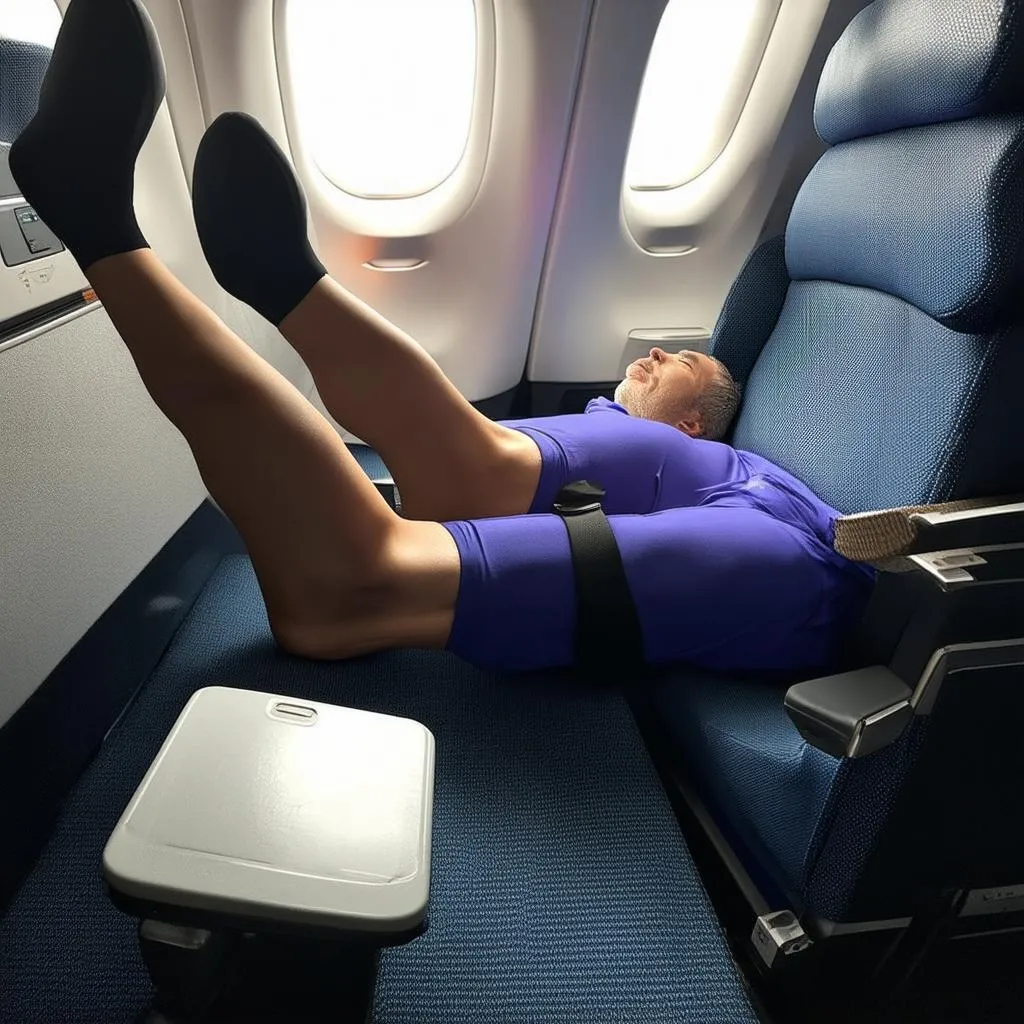Have you ever been on a long flight, maybe from bustling New York City to the historic streets of Rome, and felt a slight pain in your calf? Or maybe you’ve been recovering from surgery and noticed swelling in your leg. While these symptoms can be harmless, they could also indicate a serious condition: a blood clot. And if that clot travels to your lungs, it’s known as a pulmonary embolism.
What is a Traveling Blood Clot in the Lungs?
A traveling blood clot, or pulmonary embolism (PE), occurs when a blood clot, often formed in the deep veins of the legs or arms (deep vein thrombosis or DVT), breaks loose and travels through the bloodstream to the lungs. This clot can then block an artery in the lungs, restricting blood flow and potentially causing serious complications.
Understanding the Risks
While anyone can develop a blood clot, certain factors can increase your risk, especially during travel:
- Long periods of immobility: Sitting in a car, train, or airplane for extended periods can slow blood flow in your legs.
- Recent surgery: Surgery can increase your risk of developing clots, particularly orthopedic procedures.
- Certain medical conditions: Some health conditions like inherited clotting disorders, heart disease, and cancer can increase your risk.
Recognizing the Signs and Symptoms
It’s crucial to be aware of the signs and symptoms of a PE:
- Shortness of breath: This is often the most common symptom and can come on suddenly.
- Chest pain: The pain might worsen when you breathe deeply or cough.
- Cough: You might experience a cough that produces blood-tinged sputum.
- Rapid heart rate: Your heart might beat faster than usual.
- Lightheadedness or fainting: This can occur due to reduced blood flow.
What to Do if You Suspect a Pulmonary Embolism
If you experience any of these symptoms, especially after a long journey or surgery, seek immediate medical attention. Early diagnosis and treatment are crucial for preventing serious complications.
Prevention is Key
The good news is that there are steps you can take to reduce your risk of developing blood clots, especially while traveling:
- Stay active: Move around regularly, even on long flights. Consider taking a walk down the aisle every hour or two.
- Stay hydrated: Drink plenty of water and avoid alcohol and caffeine, which can dehydrate you.
- Compression stockings: These stockings can help improve blood flow in your legs.
- Consult your doctor: If you have any underlying health conditions or are at increased risk, talk to your doctor about preventive measures, like blood thinners.
 Traveling Blood Clot
Traveling Blood Clot
Planning Your Trip? Don’t Forget Your Health
Just as you plan your itinerary and pack your bags, remember to prioritize your health, especially on long journeys. Familiarize yourself with the symptoms of a PE and take preventive measures to ensure a safe and enjoyable trip.
Seeking Travel Advice?
For more tips on staying healthy while traveling, visit travelcar.edu.vn. We offer a wealth of information to help you plan a safe and memorable journey.
FAQs About Traveling Blood Clots
Q: Are blood clots more common during air travel?
A: While air travel itself doesn’t directly cause blood clots, prolonged immobility can increase your risk.
Q: Can I take aspirin to prevent blood clots while traveling?
A: It’s essential to consult your doctor before taking any medication, including aspirin, for blood clot prevention.
Q: What should I do if I experience leg pain during a flight?
A: Don’t ignore leg pain. Get up and move around, or do some simple exercises in your seat.
 Airplane Exercises
Airplane Exercises
Traveling with Peace of Mind
By understanding the risks, recognizing the symptoms, and taking preventive measures, you can travel with confidence and enjoy your adventures to the fullest. Remember, your health is your most valuable travel companion.

